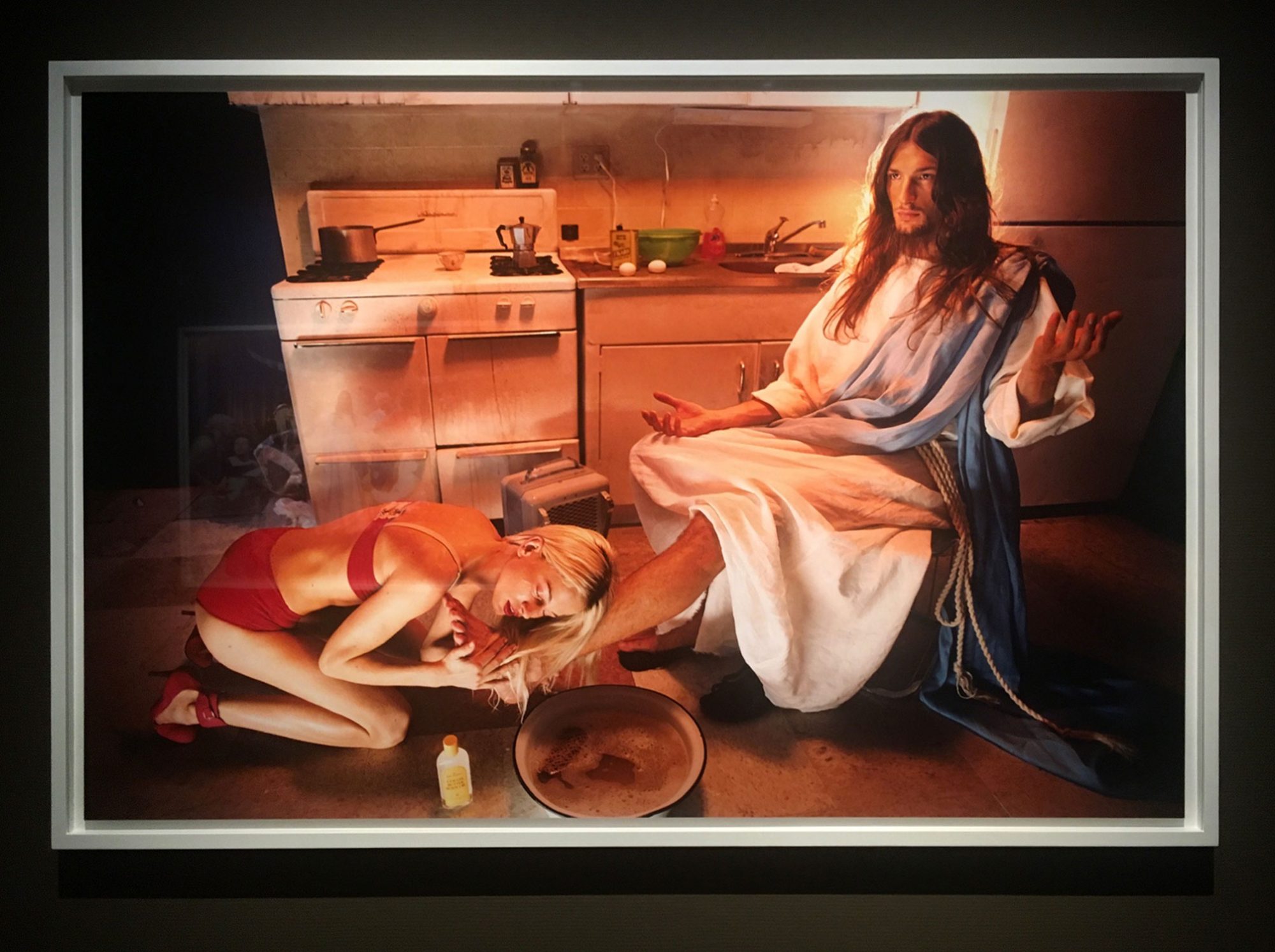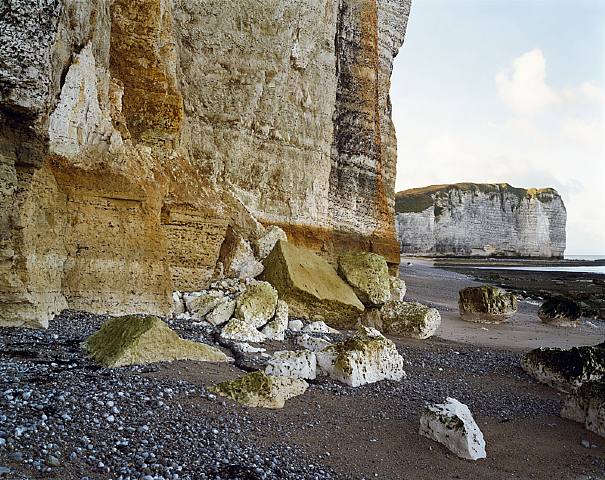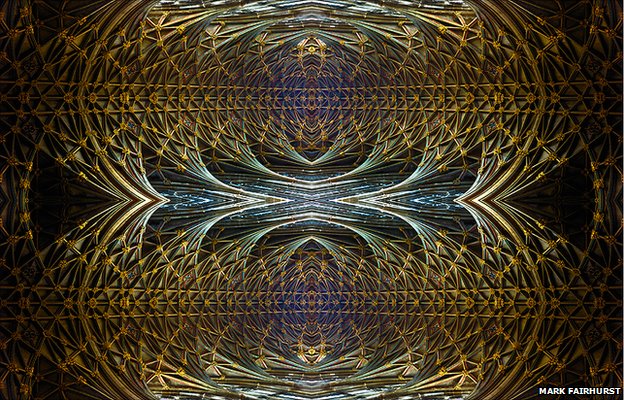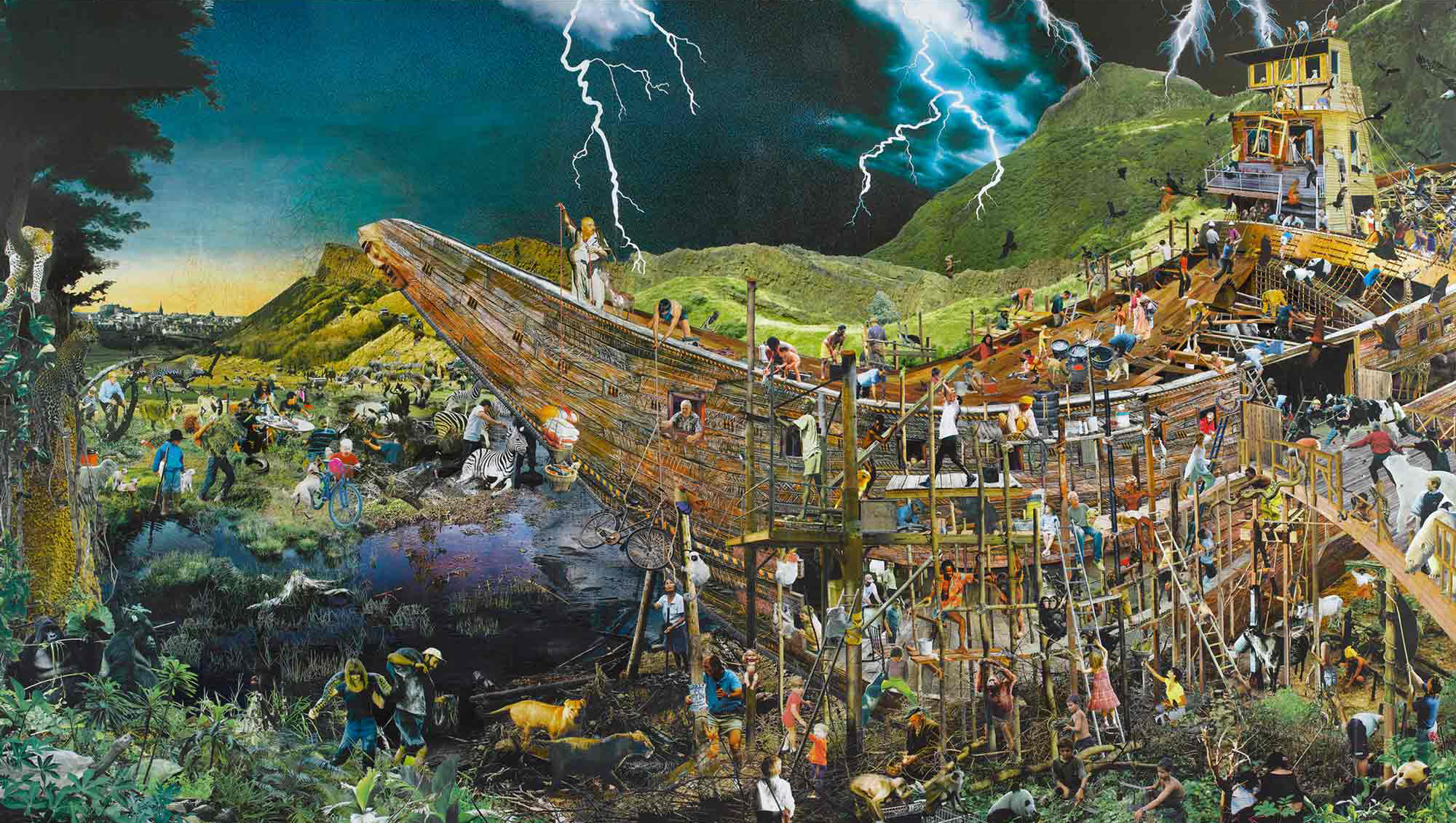Catching the last days of this exhibition at the Groninger Museum in the Netherlands, I went to see David LaChapelle’s Good News for Modern Man in October this year. Not quite a retrospective for the photographer, the show concentrates on his fine art photography with oversized tableaux prints produced in bold, searing, colours and drawing on his earlier career’s attention to celebrity and fashion icons. Produced more or less since the turn of the twenty-first century, these works catapult what might otherwise have been jaded or cynical comment on the overblown and hedonistic art-commercial scene in which he was involved into something extraordinarily vibrant. Into, indeed, ‘Good news’. For LaChapelle, the optimism underpinning his detailed attention to pictorial construction, to the art of making meaning, is one couched in the Christian language of redemption and salvation. Overtly, and with intent, LaChapelle is one of a number of photographic artists today bringing biblical reference, of which the show’s title is just one example, centre-stage.

I was, I admit, overwhelmed by the work. Over 60 pieces illuminated the colour-blocked walls with stage-lit drama and cinematic immersion: each room of 10 had its own mood of theatre, from the sun-blanched yellow of the Land Scape series, to the submerged aquamarine backdrop for the largest room Deluge. It’s no exaggeration to say that the ‘show-ness’ of the show was part of its attraction – viewers were invited to inhabit worlds in which the people represented were companionably life-size, yet also pitched at the extremes of human reckoning such as drowning, or found in Edenic forest, or at the height of societal fame (with the Kardashians). The un-peopled environments presented were just as seductive. The room Earth Laughs in Flowers contained a series of large-format chromogenic prints whose apparently traditional still-life arrangement of flowers in vases disguised more contemporary visual abundance in artful combination: tins of pop, mobile phones, plastic packaging. The series title comes from Ralph Waldo Emerson, one work from which includes the line ‘God is Not the Author of Confusion’ in the kaleidoscopic presentation of a Late Summer bouquet.
Over-abundance, kaleidoscopic colours, and an unflinching embrace of Western society’s more decadent preoccupations are yet compatible with LaChapelle’s Catholic faith. Inspired by Michelangelo’s Sistine Chapel ceiling, his 2006 work The Deluge includes a saving Jesus figure reaching from a cruciform telegraph pole, forming the apex of a flooded and chaotic urban recreation of the Genesis story. In his Awakened series (2007), single submerged figures in contemporary dress, named after biblical characters such as Abram, Ruth, and Deborah, are suspended in life or death, light blazing from behind them. And he has said of his series about Jesus, pictured above:
If you really want to shock people in the art world, talk about Jesus or God. You could take a dump on a gallery floor and they won’t care. That’s art … when I wanted to do Jesus Is My Homeboy, I wanted to ask who Jesus would hang with, if he was back. And it wouldn’t be the aristocrats or the rich people, but the disfranchised. I was making this point to the editor of i-D and I heard the phone go dead. Eastern religions like Buddhism are cool – anything foreign or exotic like that is acceptable, but Christianity has a horrible reputation because of fundamentalists and evangelicals.
(quoted by Nosheen Iqbal in the Guardian, 21/11/17). LaChapelle’s is a reading of simultaneity across Bible subject, art subject, and contemporary human experience. It is not particularly loaded with moral freight or intellectual depth, lacking the dimensionality of either backwards- or forward-facing temporality, and its present is an imaginative realm rather than the social or geographical field of photographic topos. In this sense, LaChapelle’s work orchestrates biblical reference for unironic symbolic value, to reclaim from the extremes of fundamentalist religious interpretation or art-world dismissal a lively middle way in which it is possible, as he put it, to ‘live dimensionally [in the modern world] and still have faith’ (interview on The Art Newspaper, October 2008). I like the intent here, and the sense of ownership. From a white gay former studio assistant to Andy Warhol, it’s an ownership that confronts prejudice on so many levels. Here’s to the recognition of that, especially when it’s in danger of being lost in the stream of celebrity-association that LaChapelle is more often known for.
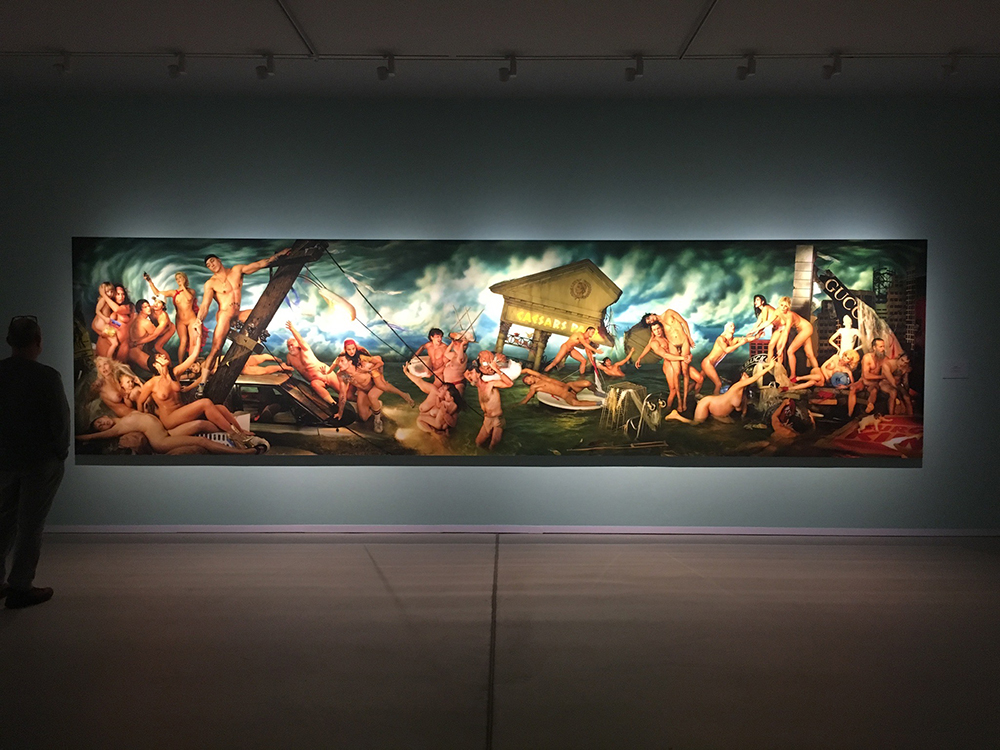
Header image: Anointing, 2003, from the series Jesus is my Homeboy, by David LaChapelle.
